With unfailing regularity, I get asked which of the many historical figures I have covered in my work fascinates me most. With equal regularity, I reply “Ikkyu.”
In case you are not familiar with Ikkyu and you need a quick primer, here are two options:
The two episodes I did about his life are some of my favorites that I ever recorded for History on Fire. Here’s Episode 45: Sex, Sake and Zen. And here’s Episode 46: Enjoying Hell.
If you are in the mood for something quicker, at the bottom of this essay is a little something that I wrote about Ikkyu over a decade ago.
But first, I’ll tell you a little bit about my recent experience. Knowing how passionate I am about this topic, my friend Teras from Geek Nation Tours made sure that one of the first stops in our tour of Japan would be the temple outside of Kyoto where Ikkyu fled the Onin War that was destroying the city in 1467, and where his epic love story with the blind singer Mori took place.
To give you a taste of the place, here’s a video I found on YouTube.
The temple is stunning and so is the nature surrounding it. Imagining Ikkyu hanging out in the very same spot filled me with joy. A couple of fun coincidences added some spice to the visit. A sweet Japanese lady who knew nothing about my love for Ikkyu saw me taking a picture close to his statue, did a double take and said, “You look like Ikkyu”, and then proceeded to call me ‘Ikkyu-San’ for the following few days.
The other thing that left me scratching my head was when I saw a portrait of Ikkyu at the site. Back a few years ago, my lady Sovannahry Em created a beautiful Ikkyu t-shirt that you can see the two of us wearing right here:
It portrays Ikkyu sitting on a rock and drinking the wine that is falling off the body of a naked lady (and on the back, it features the Ikkyu quote “The autumn breeze of a single night of love is better than a hundred thousand years of sterile sitting meditation.” As you can probably see in the picture, the t-shirt is green, which is odd because I never cared for green t-shirts. For some reason, though, when we had to decide which color to use, green felt right. Now comes the weird part. As I mentioned above, I saw a portrait of Ikkyu at the temple. Most versions available on the net show completely different colors from the original. This is the closest to what the original actually looks like:
In the original version I saw at the temple, the top of the robe Ikkyu is wearing is of the identical shade of green as our t-shirt.
But enough with coincidences and my musings. I’m writing this far too late at night, after too many days of being sleep-deprived, so let me wrap this up with some of the photos from our visit, and then I’ll conclude with my piece on Ikkyu from a decade ago.
The Zen garden at the temple.
Sheltering a statue of young Ikkyu from the rain.
A quick video from our visit:
And to wrap things up, here’s the thing I wrote a while back about Ikkyu:
“Most Westerners who become fascinated with Zen Buddhism are intrigued with its reputation as an anti-authoritarian, freedom-loving, individualistic tradition. Books by excellent writers like Alan Watts popularized an image of Zen as a very relaxed, go-with-the-flow type of religion. But even a brief visit to a typical Zen temple is enough to make us painfully aware of the difference between hype and reality. Life in real Zen temples, in fact, is often so structured, regimented and heavily regulated as to quickly dispel the romanticism created by much of the literature about it. Far from being a hippie rendition of Buddhism, Zen discipleship can be demanding and severe.
But sometimes even misguided stereotypes are born from seeds of truth. Enter 15th century Japanese monk Ikkyu Sojun, who was truly as free, wild and allergic to authorities as advertised.
For Ikkyu, Zen was not a spontaneous calling. Rather, he stumbled upon it as an alternative to being murdered in infancy. Given that choice, Zen training didn’t seem so bad after all. Ikkyu, in fact, was the illegitimate son of the emperor of Japan, and the object of several conspiracies aimed at thinning out the ranks of potential candidates to the throne. In an effort to have his life spared, his mother entrusted him to a Zen monastery when he was only 5 years old: not the most fun-filled scenario for a little boy, but clearly more appealing than having angry assassins slicing you to pieces.
His early life was extremely tough since the training he received from the Zen monks was brutally stern. Despite some serious bouts of depression in this joyless environment, it became quickly clear to his teachers that Ikkyu possessed an amazing intellect, and that his grasp of Zen was unparalleled. But the fact that he excelled in this setting didn’t mean he felt at home in it. Despite genuinely loving Zen (or perhaps because of it), he was less than thrilled with the spiritual bureaucracy of the temples. Also, many of the priests bugged him: too many political games and too much time spent courting the favor of rich patrons. And so when the day came when his master presented him with a certificate of enlightenment—which was both a great honor and the necessary document to begin climbing the Zen hierarchy—Ikkyu promptly decided to wave goodbye to a monastic career and burned it.
This doesn’t mean he had given up on Zen. Far from it. In his thinking, it was the entire Zen establishment that had abandoned real Zen by turning it into a dogmatic parody of what it was supposed to be. Life in the temples was stifled by too many rules and not enough fresh air. The so-called professionals of Zen were in Ikkyu’s eyes a bunch of posers—too busy acting “spiritual” to be able to really taste spirituality in its rawest forms. Some people believed Zen enlightenment could only be found among clouds of incense in silent meditation. Ikkyu, on the other hand, found sake-drinking and wild sex more to his liking. As he put it in his poems, “The autumn breeze of a single night of love is better than a hundred thousand years of sterile sitting meditation.” Or, even more bluntly, “Don’t hesitate: get laid—that’s wisdom. Sitting around chanting sutras: that’s crap.” Driven by an uncompromising thirst for life, Ikkyu became a wandering monk, testing his Zen insights far away from the seclusion of the monasteries, and earning the nickname of “Crazy Cloud.”
The point of his erotic escapades and wild adventures was to suggest that the “sacred” is nothing other than regular life experienced with 100 percent awareness. Or perhaps, sake-drinking and inordinate amounts of sex didn’t need any justification at all other than the fact that they were a hell of a lot of fun. Ikkyu didn’t give a rat’s ass about what the religious authorities of his day thought of him anyway. But in the course of his travels, Ikkyu managed to influence great numbers of artists, poets, calligraphers, musicians, and actors in such a way that his ideas left a deep mark on the development of several Japanese art forms for centuries to come. Even his love life came to be celebrated through the ages, since his relationship with Lady Mori ended up being among the most famous romances in Japanese history.
But since good old Ikkyu was a man who loved paradoxes, when a civil war had destroyed most Zen temples in the country, he came to the rescue of the very institutions he had ferociously criticized. Just when the future of Zen seemed in peril, he was able to enlist the help of the many acquaintances he had met during a lifetime of travels and mobilized them into rebuilding some of the key temples throughout the country. So, oddly enough, much of modern Zen owes a huge debt for its existence to a man who preferred the company of sex workers to that of monks.”


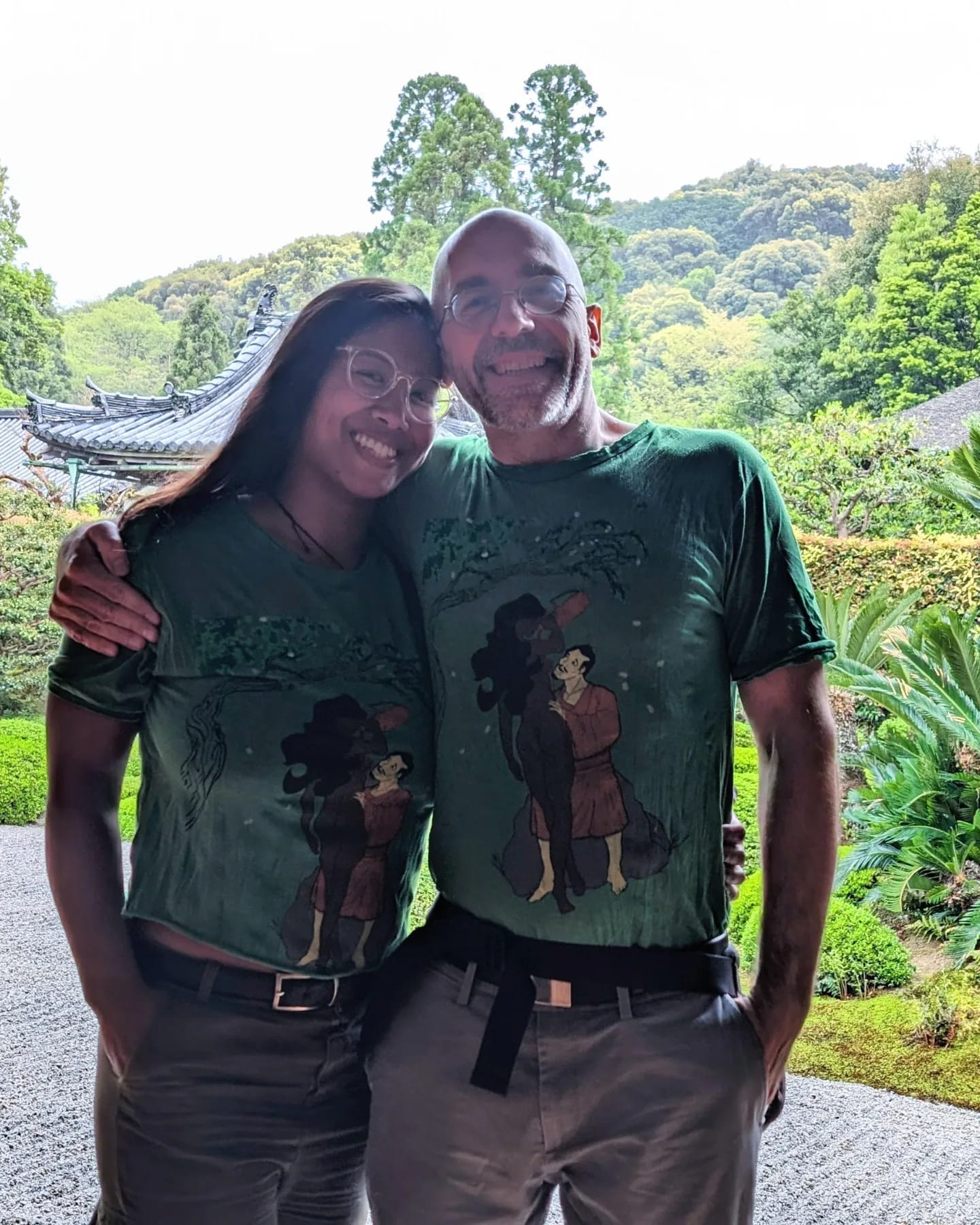
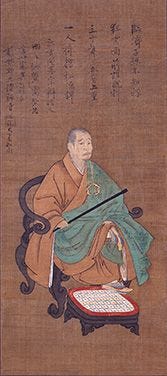
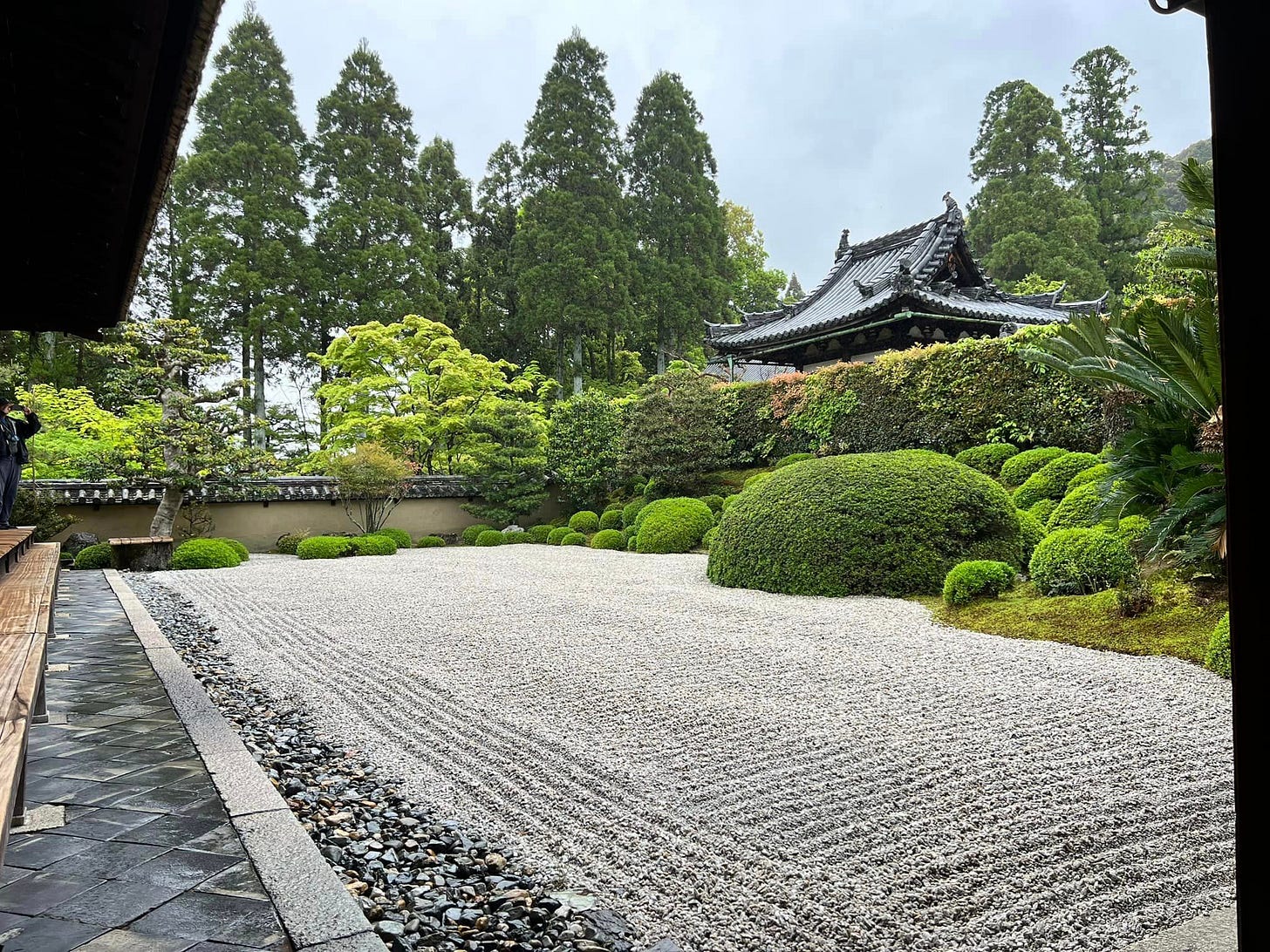
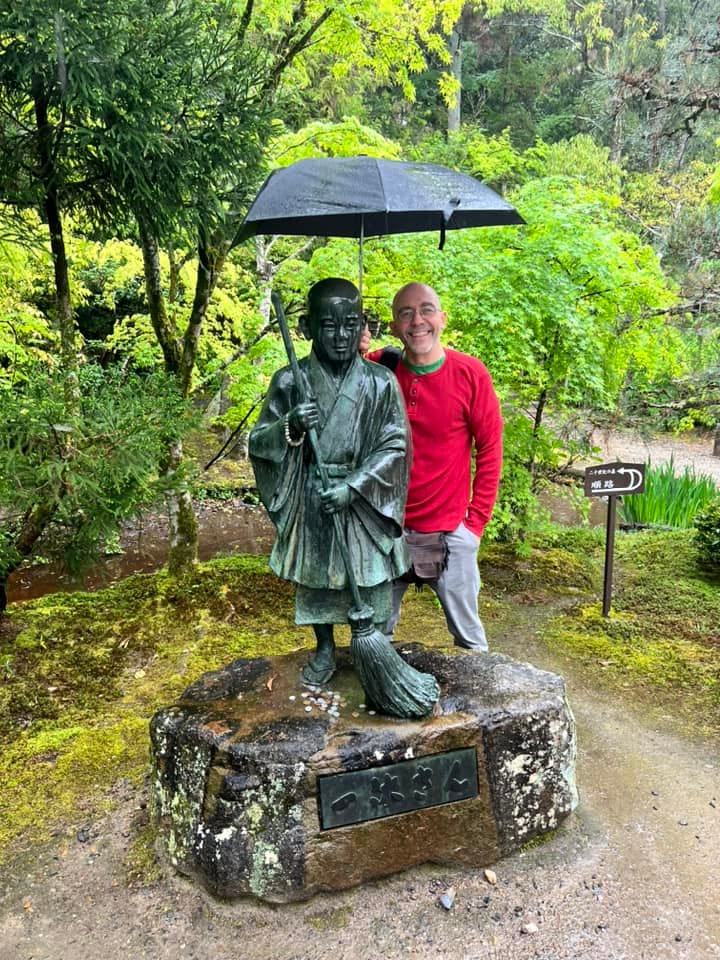
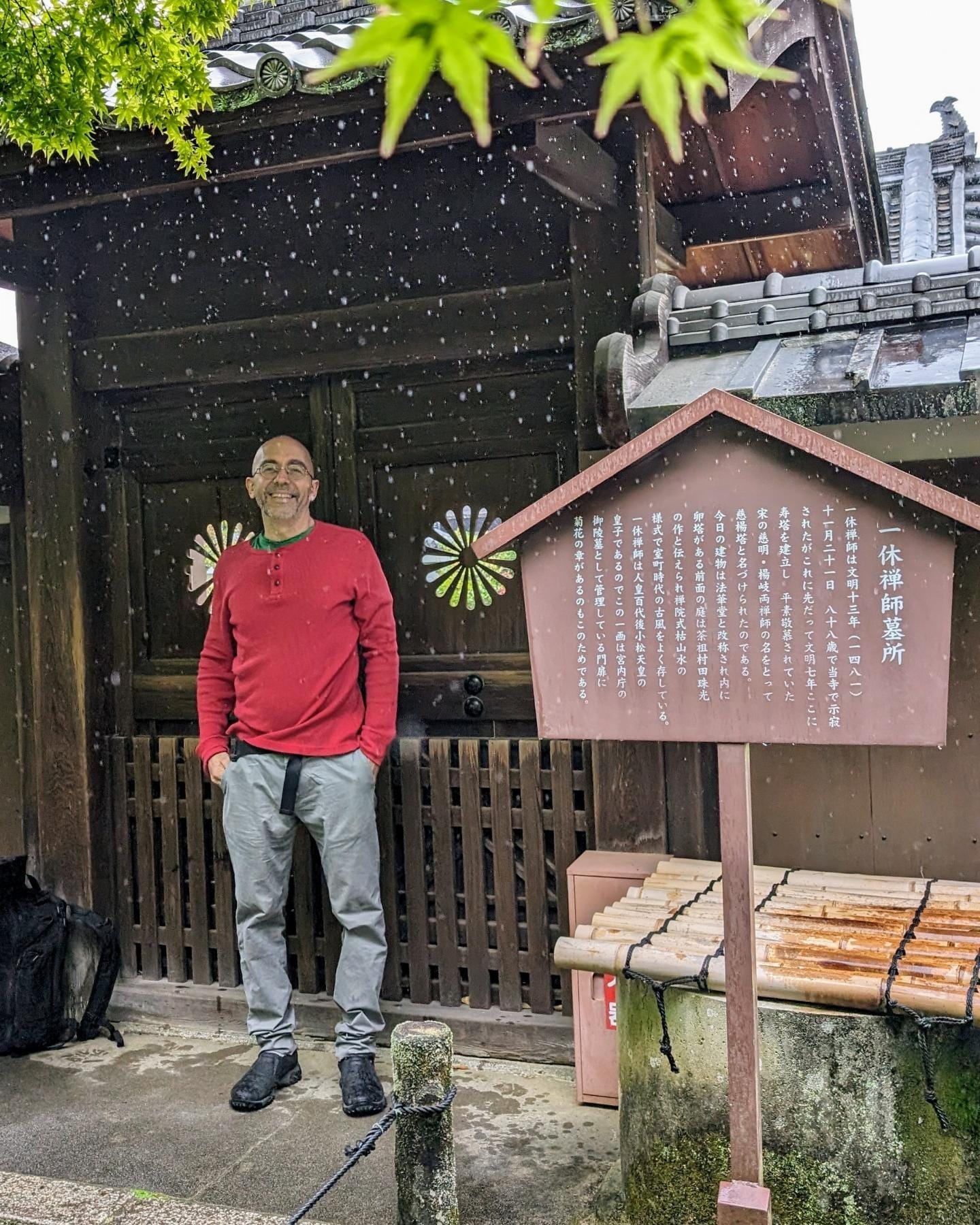
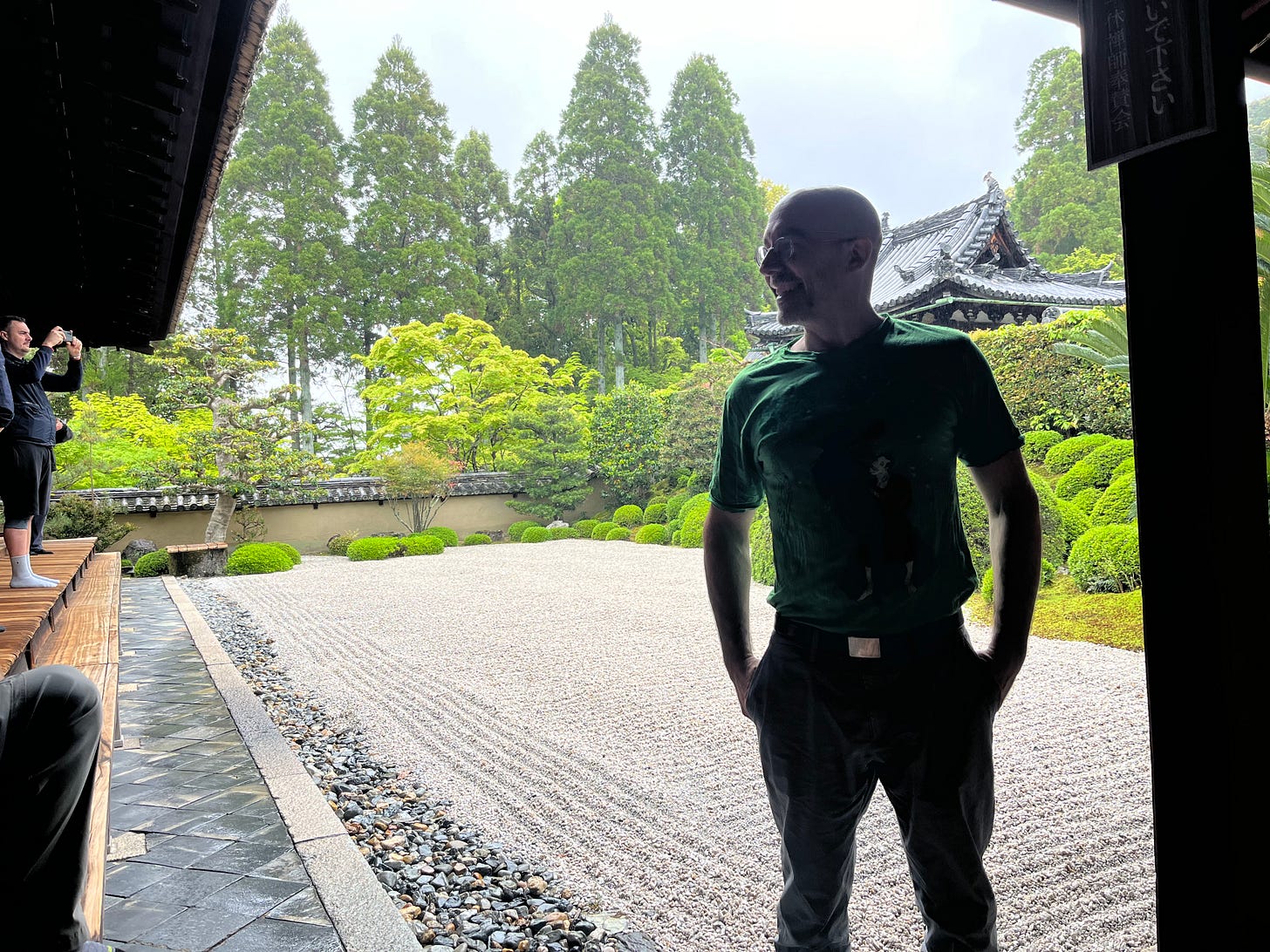
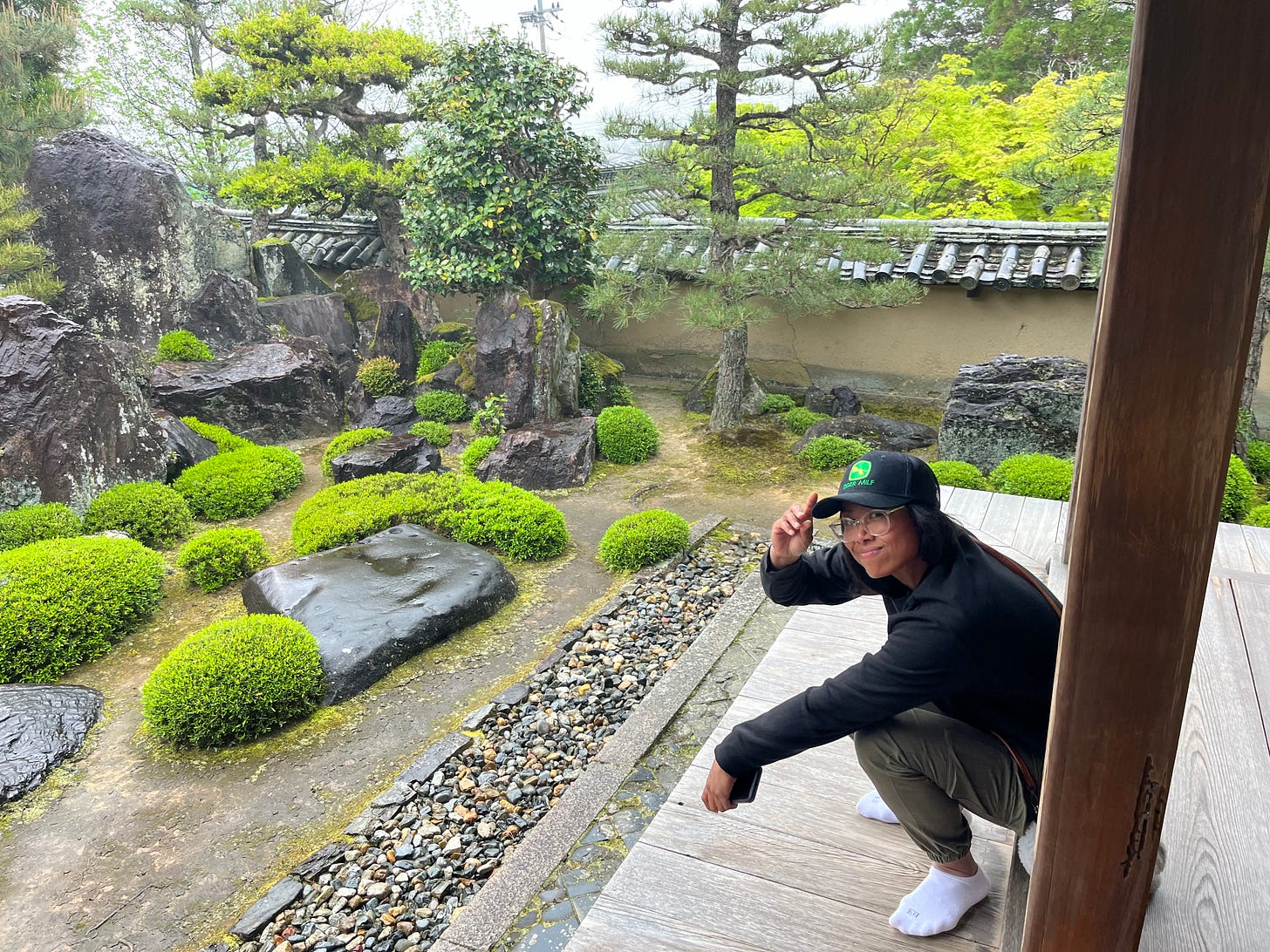
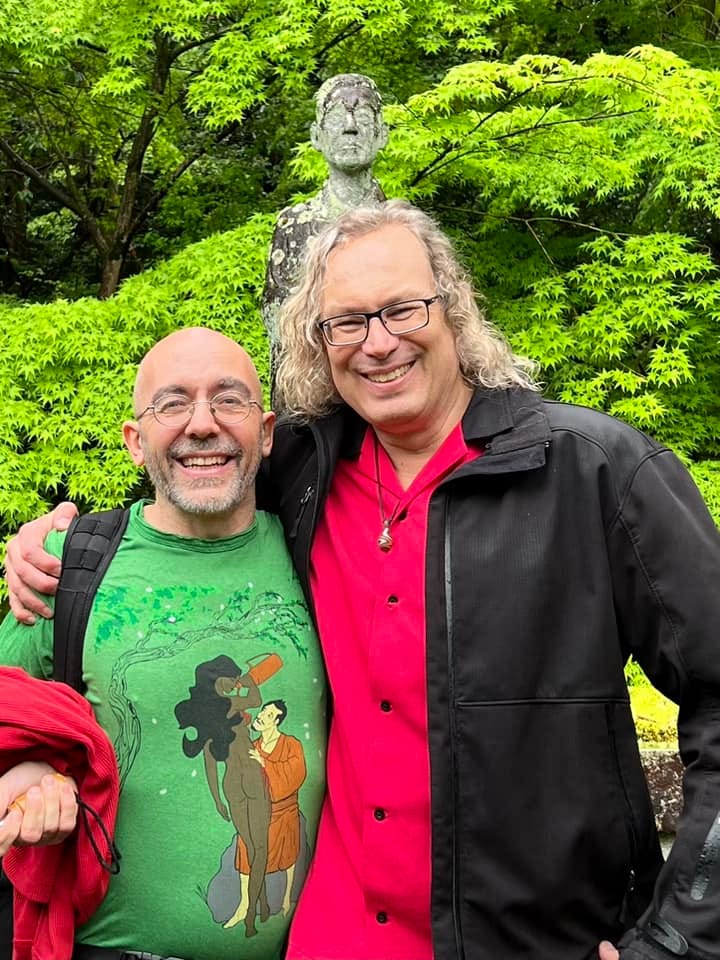
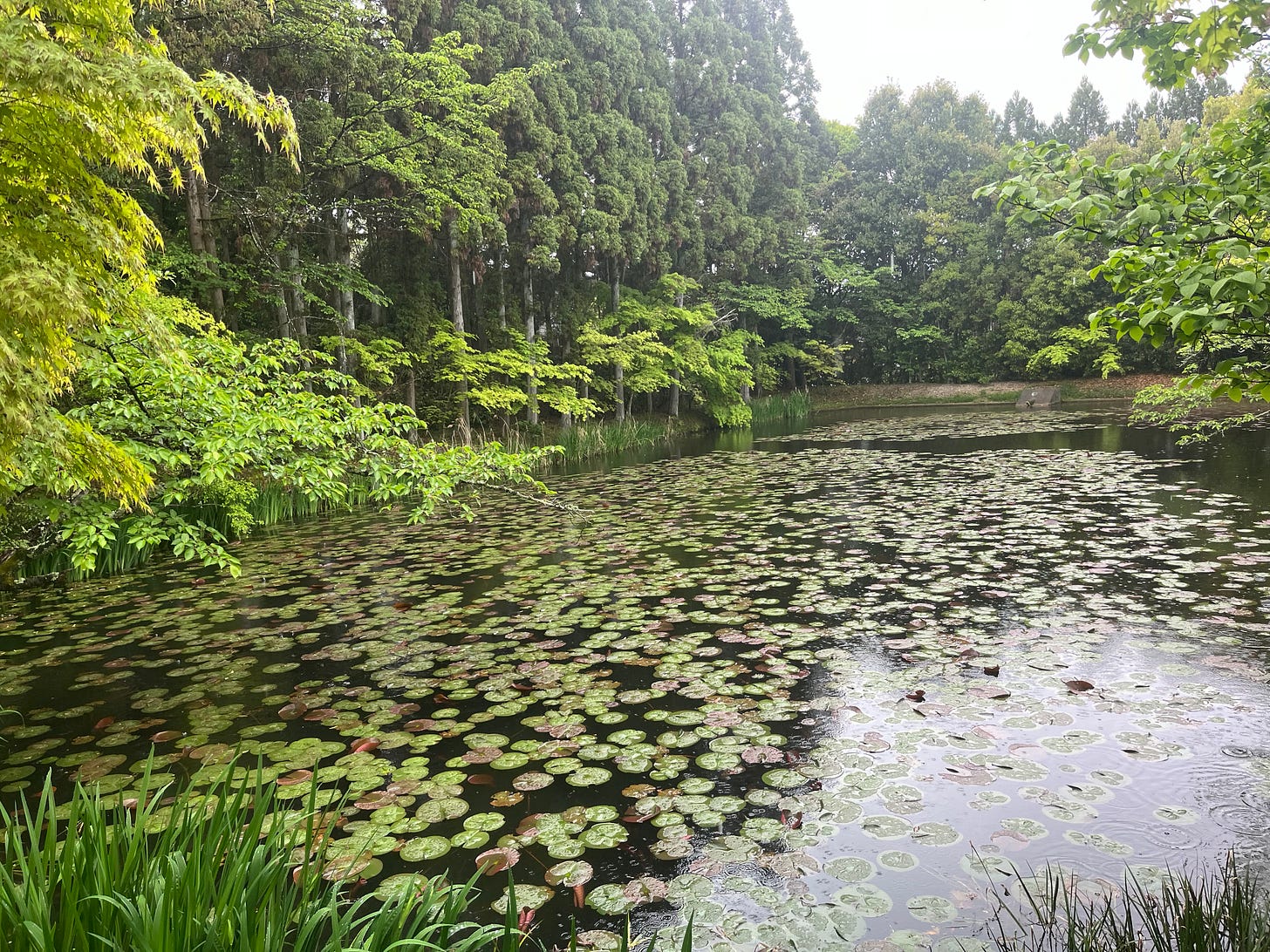
That’s so cool about the green of the shirt!
I still love wearing mine and have always liked that it’s a green that I’d otherwise not usually wear…